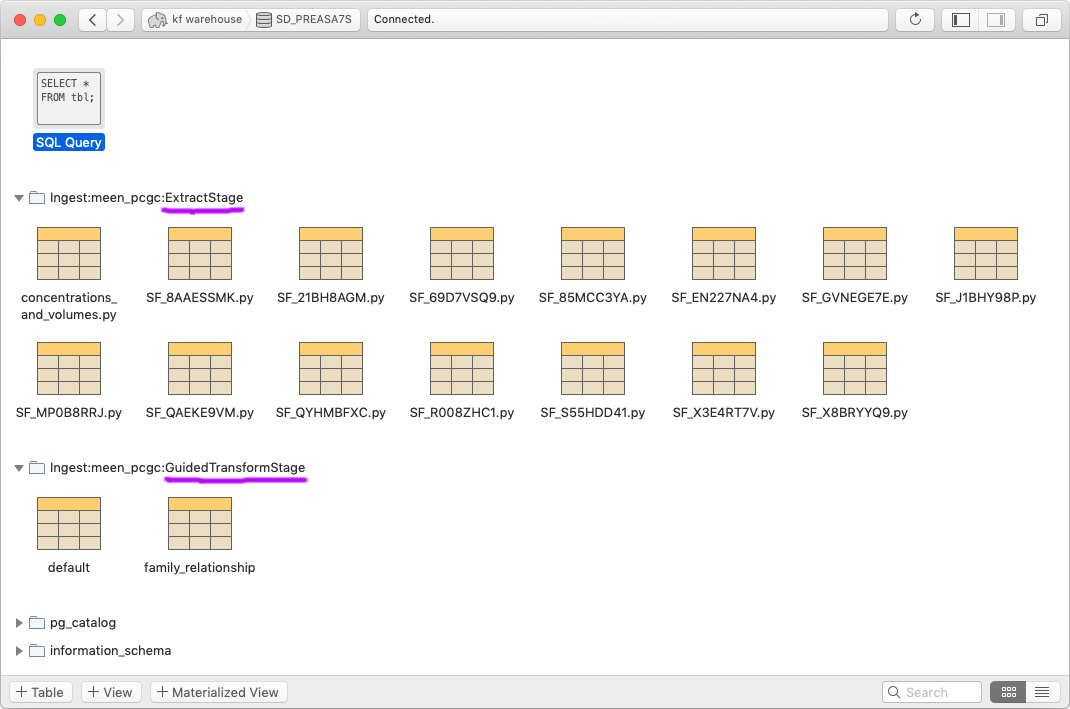Remote Warehousing¶
Sharing is caring, so storing ingest debugging data only on your own computer is bad news bears. With minimal configuration, the ingest system can connect to a remote warehousing database to centrally store your package’s intermediate Extract and Transform results as well as the KFID lookup cache for the study. This makes it easier for others to assist in replicating, validating, and modifying the results of an ingest.
Warehouse Server Requirements¶
The technical requirements for warehousing are:
A database server that supports namespace schemas (ask your group administrator if one has already been set up)
PostgreSQL will work
MySQL will not work
An account on the database server with sufficient access permissions to invoke
CREATE DATABASE,CREATE SCHEMA,DROP SCHEMA,CREATE TABLE,DROP TABLE, andINSERTThe power of friendship
Note
Connection details for the warehouse used for ingesting Kids First studies can be found at https://github.com/d3b-center/clinical-data-flow/tree/master/warehouse
Local Environment Configuration¶
In your local environment, set a variable named according to the definition of
SECRETS.WAREHOUSE_DB_URL in the application settings
configuration to equal a complete login URL, including
username and password if needed, that can be used for calling CREATE
DATABASE on the server.
As shown here from app/settings/base.py, the variable is named
KF_WAREHOUSE_DB_URL by default.
class SECRETS:
KF_STUDY_CREATOR_API_TOKEN = "KF_STUDY_CREATOR_API_TOKEN"
KF_SC_INGEST_APP_CLIENT_SECRET = "KF_SC_INGEST_APP_CLIENT_SECRET"
WAREHOUSE_DB_URL = "KF_WAREHOUSE_DB_URL"
So we would set KF_WAREHOUSE_DB_URL in our shell environment:
export KF_WAREHOUSE_DB_URL=postgresql://<username>:<password>@<address>:<port>/postgres
Note
PostgreSQL requires all connections to go directly to a database regardless of what you’re doing, so we use the default “postgres” database for this.
Enabling Warehousing¶
If you want to use the warehouse during a run, the --warehouse command line
argument will activate the warehousing steps.
Storage Layout¶
After warehousing a study, the warehouse server should have a database named after the study ID.

Inside that database you should find schemas for each of the warehoused stages prefixed by “Ingest:” and the name of the package. Each schema table will be one of that stage’s returned DataFrames.

Lifecycle¶
Whenever you ingest a package, that package’s prior existing schemas will be replaced.